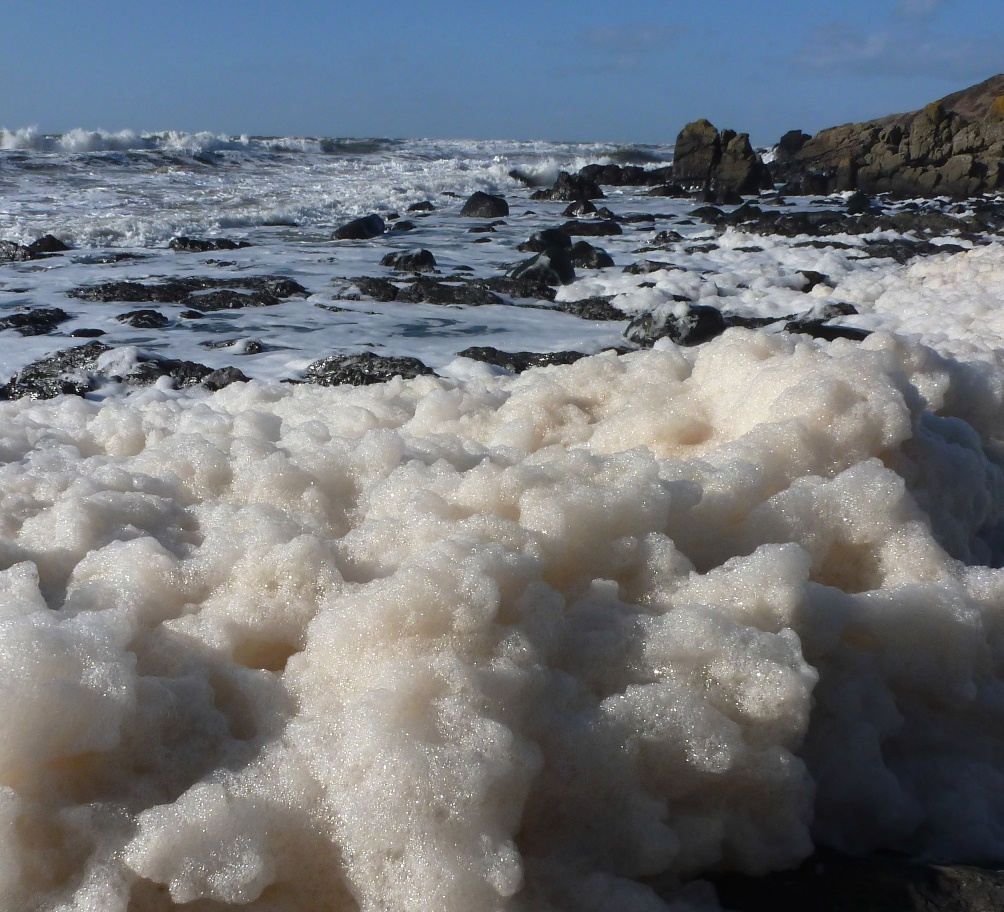Dissolved oxygen
Status: Purely descriptive
Essential for good water quality, dissolved oxygen is required for the healthy functioning of the marine environment and marine life survival. Photosynthesis and delivery through the water surface are how oxygen enters the marine environment. Other factors such as water movement over rocks and colder temperatures (but it is worth nothing that there will be less oxygen in ice covered waters due to coverage and blocking atmospheric oxygen entry) can help increase oxygen in the marine environment. Oxygen in the marine environment is consumed by organisms as well as being removed through ‘microbial activity involved in the breakdown of organic matter contained in natural detritus, sediments and discharges of organic waste from sewage treatment plants and industry’ (Baxter, et al, 2011). If removal of oxygen exceeds the oxygen supplied through these means then it is considered depleted. Water is considered hypoxic when dissolved oxygen is significantly depleted (between 0.2 and 2 mg/l), and anoxic when the water is virtually without oxygen (between 0 and 0.2 mg/l). There is limited region specific data on dissolved oxygen for the Solway Firth which highlights a knowledge gap for this topic. According to a recent publication hypoxia has not been detected in marine UK waters (Marine Climate Change Impacts Partnership, 2020).
The Water Framework Directive (Directive 2000/60/EC) seeks to improve the condition and sustainable use of water bodies, with all water bodies required to reach ‘Good ecological status‘, or ‘Good ecological potential‘ if the water body is artificial or heavily modified. There are earlier deadlines but 2027 is the final deadline permitted. Different parameters are used to measure when a water body reaches ‘good‘ status. The status/quality of a water body is classified in accordance with Annex V off the directive which lists; ‘Quality elements for the classification of ecological status’. There are lists of elements for the classification of; rivers, lakes, transitional waters, coastal waters, and artificial/heavily modified water bodies, with Oxygenation conditions being considered in the list for each type of water body. For more information on water body classification see the Transitional and Coastal waters section of the Solway Review.
There are no ‘artificial‘ water bodies in the Scottish Solway Firth, but the ‘Nith Estuary’, ‘River Dee (Loch Ken Outlet to Tongland)’, ‘Tarff Water’, and ‘Black Stank’ are all classed as ‘Heavily modified’ water bodies and flow into the Solway, or in the case of ‘Black Stank’ into Loch Ryan. They are also all rivers with the exception of the Nith Estuary which is classed as a ‘transitional’ water body, and is included in the table below. On the English side the Solway there are both heavily modified and artificial water bodies. These are indicated in the English Solway table below.
In Scotland the work to implement the Directive is the responsibility of the Scottish Environmental Protection Agency (SEPA) and in England it is the responsibility of the Environment Agency (EA).
In the recent Marine Climate Change Impacts Partnership recently published Report Card 2020, highlighted that oxygen levels in the UK’s marine waters will decrease as climate change causes the ocean temperature to rise. Globally dissolved oxygen levels in the ocean have declined by 2% since the 1960’s, with predictions that the global ocean could see an additional 4% decrease by the end of the century. More concerning is the consideration that within areas of UK waters could see a staggering decline of dissolved oxygen concentrations of up to 11.5% (Marine Climate Change Impacts Partnership, 2020).
Image; © European Commission – European Atlas of the Seas Interactive Mapping

